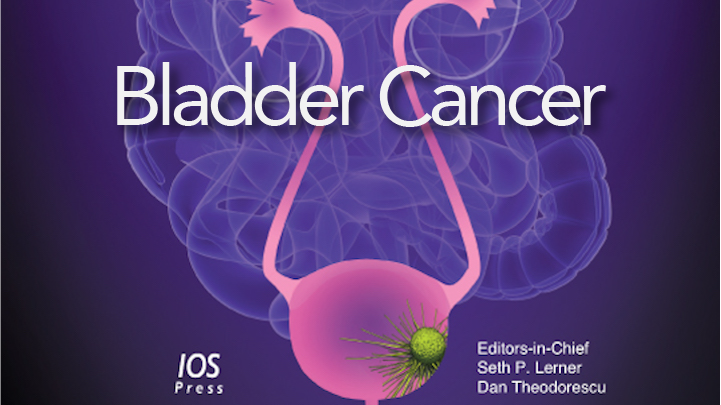
Bladder Cancer Journal Vol. 5 Issue 2
Clinical Development of FGFR3 Inhibitors for the Treatment of Urothelial Cancer
The fibroblast growth factor receptor 3 (FGFR3) plays critical roles in driving oncogenesis of a subset of patients with urothelial carcinomas (UC). Growing evidence from preclinical studies suggests that FGFR3 inhibition can reduce proliferation and survival in vitro and in vivo models of FGFR3-altered UC. Early clinical trials investigating selective FGFR3 inhibitor have reported preliminary signs of antitumor activity in advanced UC patients with selected FGFR3 mutations or fusions. Currently, phase 3 trials with erdafitinib and rogaratinib are enrolling patients with known FGFR3 alterations. Future combinations with targeted therapies or immune checkpoint inhibitors may increase the efficacy of
The Role of Myeloid Derived Suppressor Cells in Urothelial Carcinoma Immunotherapy
Myeloid derived suppressor cells (MDSC) are immune cells that dampen immune responses. In patients with cancer, MDSC are associated with adverse oncologic outcomes and therapeutic resistance. Pre-clinical evidence suggests that MDSC suppress anti-tumor immune responses. In this report, the biologic functions of MDSC are defined and evidence linking MDSC with the response to cancer immunotherapies in solid tumors are reviewed. Associations of MDSC in clinical bladder cancer cohorts are outlined in addition to evaluation of the suggested roles of MDSC in pre-clinical bladder cancer models. Human clinical trials that investigate possible MDSC modulators are highlighted, and therapeutic strategies to leverage
Evaluation of Hematuria in a Large Public Health Care System
Background: Hematuria is the most common presenting symptom in bladder cancer, but many patients are not adequately evaluated. Objectives: To evaluate the type and frequency of hematuria evaluation in a large public health care system. Patients and Methods: Electronic medical records of adult patients with urinalysis positive for hematuria (≥3 RBCs/HPF) from January 2015 to April 2018 in an outpatient setting were reviewed. Logistic regression was performed to determine factors associated with urology referral and complete evaluation. Results: 11,422 patients met the inclusion criteria; the majority were females (72%) and white race (60%). There
Background: The activity of PD-1/PD-L1 inhibitors in the treatment of advanced bladder cancer (BC) is promising for many patients. However, a subset of patients do not benefit from treatment, thus leading to an effort to better identify predictive molecular biomarkers of response. Objective: To conduct a systematic review of the literature on predictive molecular biomarkers associated with response to PD-1 and PD-L1 inhibitors in advanced bladder cancer, defined as locally-advanced, unresectable, or metastatic (mBC) disease. Methods: A search of the literature was performed using Embase (1947 – January 2019), Medline (1946 – January 2019), and EBM
MRE11A Isoform Expression Associated with Outcome Following Radiotherapy in Muscle-Invasive Bladder Cancer does not Alter Cell Survival and DNA Double-Strand Break Repair Following Ionising Radiation
Background: DNA double strand breaks are the cytotoxic lesions produced by ionising radiation. Critical for the repair of these lesions is the DNA damage response protein MRE11 which, in a complex with RAD50 and NBS1, mediates DNA damage signalling and double-strand break repair. We previously found the presence of an MRE11 germline single nucleotide polymorphism (SNP), rs1805363 (G > A), to be associated with poor outcome following radiotherapy (RT) and increased expression of MRE11 isoform 2 in a limited panel of bladder cancer cell lines and tumours. Objectives: To look for further evidence in support of the
Background: Major interest lies in the evaluation of immune infiltrate in bladder cancer. CD8+ cytotoxic lymphocytes are key effectors of adaptive immune response. Objectives: The aims of the study were to set up a standardized methodology for CD8+ lymphocytes estimation in NMIBC and investigate how intra-tumoral heterogeneity influences CD8+ immune infiltrate. Methods: We considered 995 NMIBC included in the Spanish Bladder Cancer (SBC)/EPICURO Study. Duplicate 0.6 mm TMA spots and paired full sections (FS) for 50 selected cases were double stained with anti-pan cytokeratin antibody and anti-CD8 antibody. Slides were digitalized and CD8+ cells were automatically counted
A Clinical Trial of the Intradermal TLR2 Agonist CADI-05 for BCG Recurrent and Unresponsive Non-Muscle Invasive Bladder Cancer
Background: CADI-05, a TLR-2 agonist, induces Th1 immune response following intradermal administration and has been found useful in management of lung cancer and melanoma. Objective: To evaluate CADI-05 in patients with BCG recurrent and unresponsive Non-muscle invasive bladder cancer (NMIBC) for 15-months recurrence free survival (RFS) rate. Methods: In BCG unresponsive (BU) or recurrent (BR) NMIBC, CADI-05 was administered intradermally every two weeks for 3 months followed by every month for 3 months and subsequently every 2 months for 6 months following transurethral resection (TUR) in a single arm study (ClinicalTrials.gov: NCT00694798). Cystoscopy, cytology, and sonography



